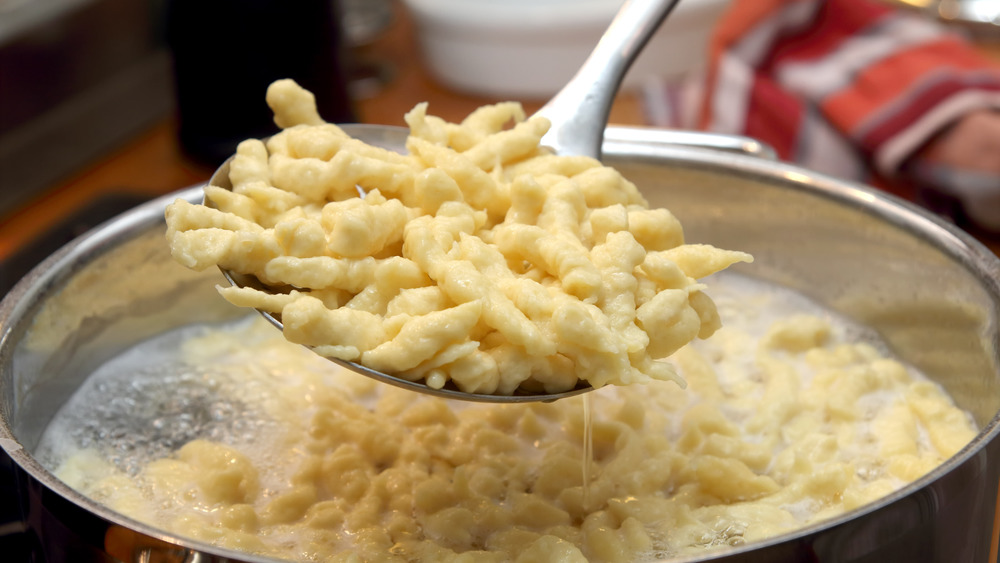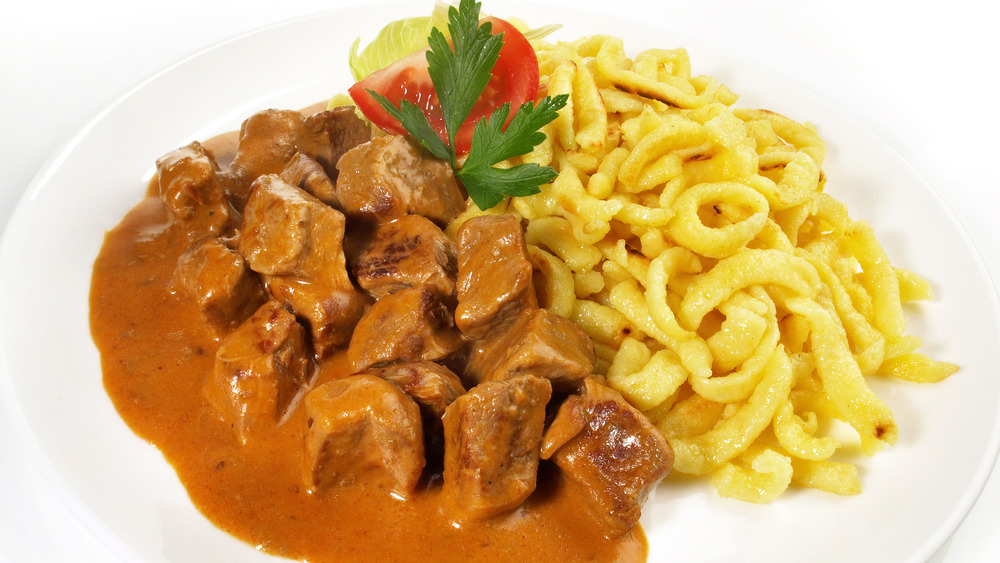What Is Spaetzle And What Does It Taste Like?
We may receive a commission on purchases made from links.
If you've spent way too much time and money trying to make your own pasta just to find it doesn't even live up to the fresh pasta you can buy at specialty stores, you may have given up on the idea of having fresh pasta as a regular part of your diet. Luckily, there's an infinitely versatile and incredibly easy version of fresh pasta called spaetzle that's so simple to make that you'd have to try pretty hard to mess up. In fact, it's a staple of German, Austrian, Swiss, Czech, and Hungarian home cooking for just that reason; plus it makes a perfect accompaniment to just about any main dish (via Taste).
The name "spaetzle" means "little sparrows," but these tiny, delicious nuggets don't really look too much like birds. Their shape comes from the way the runny dough is dropped into boiling water through a special device that looks like a combination of a colander and a mandolin (via Amazon). If you don't have one, you can make do with a large slotted spoon or any kitchen tool with large, regular holes. The result is an oblong, slightly bumpy "noodle" that is perfect for soaking up sauces. Plus, the ingredients really couldn't be simpler.
How to make spaetzle at home
If you ever see a spaetzle mix in the supermarket near the pancake mixes, don't let yourself be tempted. It's probably just flour with a small amount of salt in it (i.e. a ripoff). In fact, the ingredients for spaetzle are so simple that you almost certainly already have them in your kitchen: flour, salt, eggs, and water (via German Food Guide). That's it. This simplicity makes sense when you realize that the first evidence of spaetzle dates back to 1725, though it probably had already existed for much longer.
The light, dumpling-like texture of spaetzle comes from the runniness of the dough, which is too thin to be rolled out or shaped with a pasta maker. That's why it is instead fed through a spaetzle maker, slotted spoon, or colander directly into boiling, salted water. From there, the spaetzle is boiled just long enough for it to rise to the surface of the pot, which signifies it is fully cooked. To avoid overcrowding in the pot (which can cause the spaetzle to stick together), boil them in small batches. From there, you can serve it plain, as a base for any kind of sauce, or sautéed with butter and herbs for a classic side dish (via The Stay at Home Chef).

